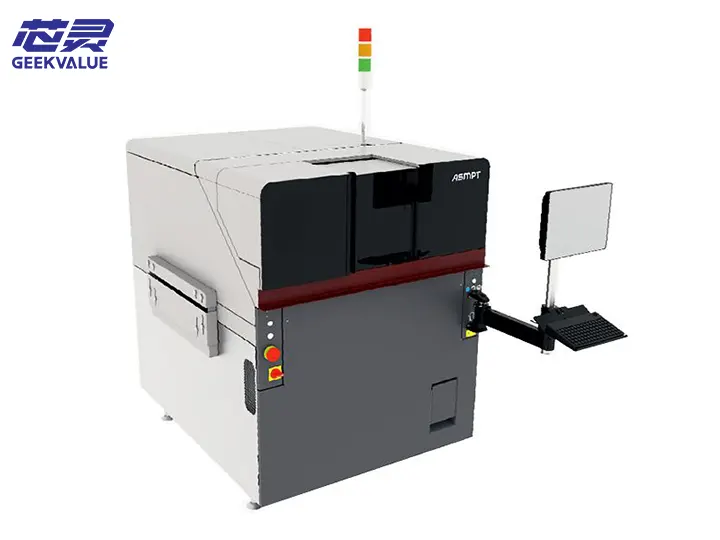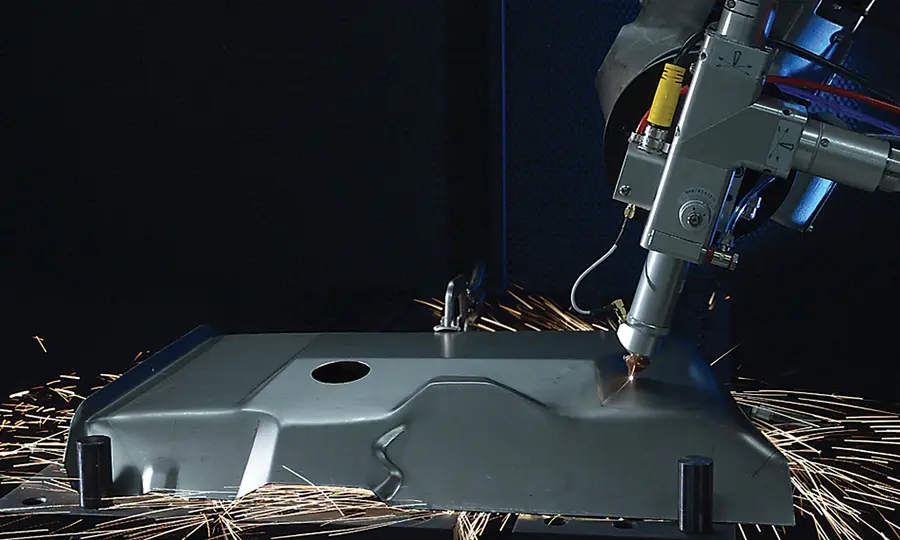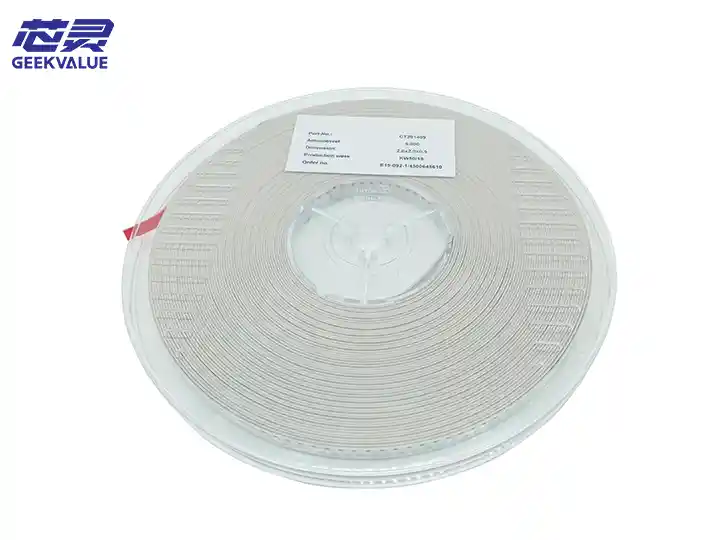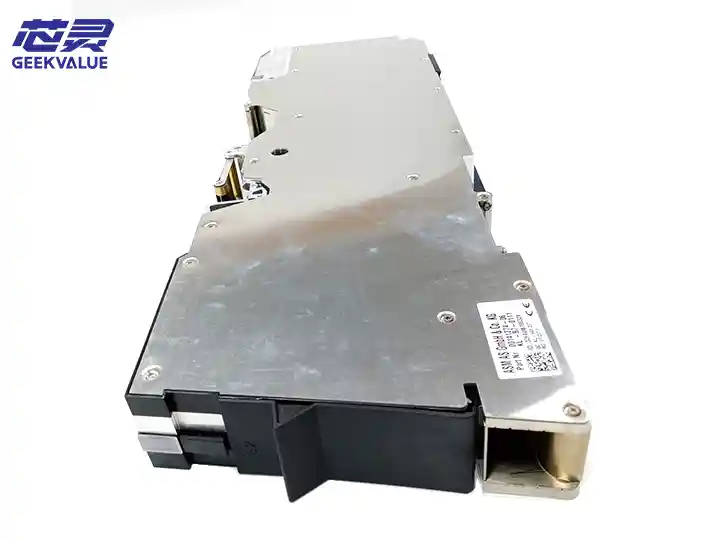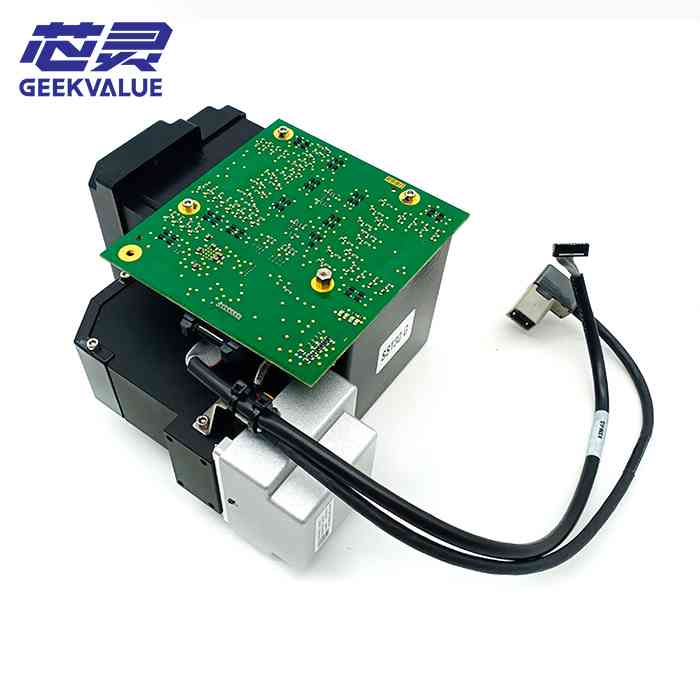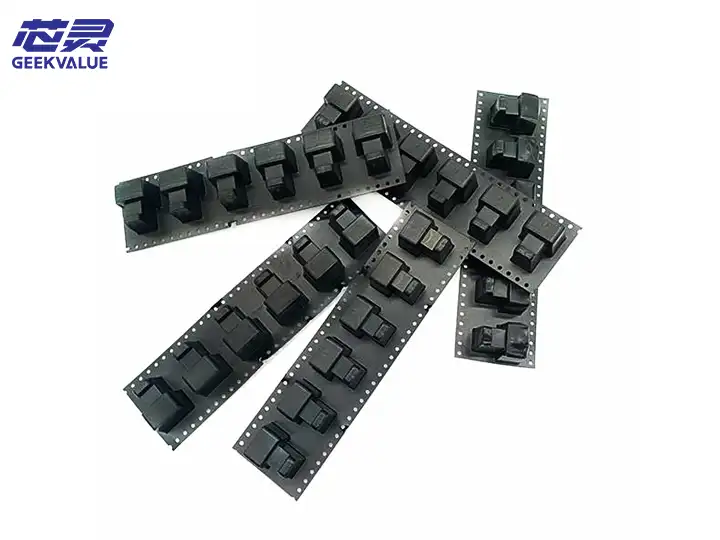I-DEK TQL sisishicileli sokuncamathisela se-solder esisebenza ngokugqibeleleyo esisebenza ngokuzeleyo esasungulwa yi-ASM Assembly Systems (eyayifudula iyi-DEK). Yenzelwe ukuchaneka okuphezulu kunye nomthamo ophezulu wemigca yemveliso ye-SMT kwaye isetyenziswa ngokubanzi kubathengi be-electronics, i-automotive electronics, izixhobo zonxibelelwano kunye nezinye iinkalo. Ilungele ushicilelo lwe-solder paste ye-PCBs ene-pitch-pitch efana ne-01005 amacandelo kunye ne-0.3mm pitch BGA.
2. DEK TQL iinkcukacha eziphambili
Iinkcazo zeeParameters
Ubungakanani obukhulu bePCB 510 × 460 mm
Ukuchaneka koshicilelo ±15μm (Cpk≥1.33)
Isantya soshicilelo 50–300 mm/s (siyalungiseka)
Uxinzelelo lwe-scraper luluhlu lwe-5-20 kg (eprogrammekayo)
Inkxaso yokuqina kwestencil 0.1-0.3 mm
Isantya sokumisa 0.1–3 mm/s (esinokulungiswa)
Iimfuno zamandla 220VAC / 50-60Hz, 1.5kW
Uxinzelelo lomthombo womoya 0.5-0.7 MPa
Inkqubo yombono yeCCD enesoso esiphezulu (ixhasa i-2D/3D SPI)
3. Iimpawu eziphambili ze-DEK TQL
1. Ushicilelo oluchanekileyo
±15μm ukuchaneka yoshicilelo, ixhasa amacandelo emihle ezifana 01005, 0.3mm pitch BGA.
Inkqubo yokulawula i-loop evaliweyo, ukulungiswa kwexesha langempela loxinzelelo lwe-scraper ukuqinisekisa ubuninzi be-solder paste.
2. Isantya esiphezulu kunye nokusebenza kakuhle
Isantya esiphezulu sokushicilela si-300mm / s, esiphucula i-UPH (iyunithi yeyunithi yokuvelisa umthamo weyure) yomgca wokuvelisa.
Ukutshintsha komgca okhawulezayo (<5 imizuzu), ukuxhasa ukutshintshwa kweprogram ngokuzenzekelayo.
3. Ulawulo olukrelekrele
I-2D / 3D SPI (ukufumanisa i-solder paste) ukudibanisa ukunciphisa ukuphuma kweemveliso eziphosakeleyo.
Ukucocwa komnatha wentsimbi ngokuzenzekelayo (ukosule okomileyo/ukusula okumanzi/i-vacuum adsorption) ukunciphisa intsalela ye-solder paste.
4. Izinzile kwaye zithembekile
Uyilo lwemodyuli (i-scraper, ikhamera, inkqubo yokucoca inokutshintshwa ngokukhawuleza).
Ukufakwa kwenkqubo ye-MES ukufezekisa ukulandeleka kwedatha kunye nokuphucula inkqubo.
IV. DEK TQL imisebenzi engundoqo
Ukuma kwePCB okuzenzekelayo
Ulungelelwaniso oluchanekileyo lweCCD oluchanekileyo (uphawu lokuqaphela indawo) ukuqinisekisa ukuhambelana ngokuchanekileyo kwe-mesh yentsimbi kunye ne-PCB.
Ulawulo olukrelekrele lwe-scraper
Uxinzelelo, isantya, kunye ne-engile zilungelelaniswa ukuba zilungelelaniswe neepastes ezahlukeneyo ze-solder (kubandakanya i-lead-free solder paste, iglu, njl.).
Ulawulo loxinzelelo lwentsimbi yomnatha
Zibonele ngokuzenzekelayo ukunyanzeliswa kwentsimbi yomnatha ukunqanda ushicilelo olulambathayo ngenxa yomnatha wentsimbi.
Ukuchongwa kwe-3D ye-solder yokucola (ukhetho)
Umlinganiselo wexesha langempela le-solder paste ubukhulu kunye nomthamo wokuthintela iziphene ezifana nokungonelanga kwe-solder kunye neengcebiso zokutsala.
Ukujongwa okude kunye nohlalutyo lwedatha
I-Industry Support 4.0, inokuxhuma kwi-MES / ERP inkqubo, kunye nokwandisa iiparitha zokuvelisa.
V. Indima ye-DEK TQL kumgca wokuvelisa we-SMT
Phucula isivuno
Ukuchaneka okuphezulu kokuchaneka kunciphisa i-solder engalunganga emva kwepatch ye-SMT (efana ne-soldering ebandayo kunye nokudibanisa ibhulorho).
Ukuphucula ukusebenza kakuhle
Isantya esiphezulu soshicilelo + utshintsho lomgca okhawulezayo, mfutshane umjikelo wemveliso.
Nciphisa iindleko
Ukunciphisa inkunkuma ye-solder kunye nereyithi yokuphinda usebenze kwakhona.
Ukulungelelanisa kwimveliso eguquguqukayo
Ukuxhasa iindidi ezininzi, i-batch encinci ye-PCB yemveliso (njengeemfuno ezilungiselelweyo ze-automotive electronics).
VI. Imiqathango yokusetyenziswa
1. Ukufakwa kwezixhobo kunye nokusingqongileyo
Ulawulo lobushushu/ukufuma: Ubushushu obucetyiswayo bendawo yi-23±3℃ kunye nokufuma yi-40-60%RH.
Uzinzo lwemithombo yerhasi: Qinisekisa ukuba uxinzelelo lomoya yi-0.5–0.7MPa ukunqanda ukuguquguquka okuchaphazela umgangatho woshicilelo.
Ukulinganisa okuthe tye: Isixhobo kufuneka sibekwe kumhlaba ozinzileyo kwaye umgangatho kufuneka uhlolwe rhoqo.
2. Iinkcukacha zokusebenza
Ulawulo lwe-Solder paste: Vumela ukufudumeza ngaphezu kweeyure ezi-4 kwaye uvuselele imizuzu emi-2-3 ngaphambi kokusetyenziswa.
Ukucoca i-stencil: Yenza ukusula okumanzi + ukucoca i-adsorption ye-vacuum emva kokushicilelwa kwe-5-10.
Ukugcinwa kwe-scraper: Jonga ukunxiba rhoqo. Ubomi be-metal scraper malunga namaxesha angama-500,000.
3. Ukulungiswa kwenkqubo
Isantya sokumisa: 0.3–1mm/s siyacetyiswa. Ukukhawuleza ngokukhawuleza kuya kubangela ukuba i-solder paste itsale ibukhali.
I-angle ye-Scraper: Ngokuqhelekileyo ibekwe kwi-45-60 °. I-engile encinci kakhulu inokuchaphazela umphumo we-tinning.
VII. Iimpazamo eziqhelekileyo kunye nezisombululo
1. Ushicilelo olutenxileyo (Ukusilela kokuqaphela inqaku)
Izizathu ezinokwenzeka:
PCB Phawula ungcoliseko lwendawo okanye ukubonakalisa okunganelanga.
Ilensi yekhamera imdaka okanye umthombo wokukhanya awuqhelekanga.
Isisombululo:
Coca inqaku lePCB kwaye ulungelelanise ukukhanya komthombo wokukhanya.
Lungisa inkqubo yokubonwayo kwaye ujonge ugxininiso lwekhamera.
2. Ingcebiso yokuncamathelisa i-Solder/i-solder enganelanga
Izizathu ezinokwenzeka:
Isantya sokumisa sikhawuleza kakhulu.
Uxinzelelo lwe-mesh yensimbi ayonelanga okanye uxinzelelo lwe-scraper alulingani.
Isisombululo:
Nciphisa isantya sokumisa ukuya kwi-0.3mm/s.
Jonga ukunyanzeliswa kwe-mesh yensimbi (kucetyiswa ≥35N/cm²) kwaye ulungelelanise inqanaba le-scraper.
3. Umnatha wentsimbi uvaliwe (intsalela ye-solder paste)
Izizathu ezinokwenzeka:
Intlama yentsimbi yomile okanye ukucocwa rhoqo akwanelanga.
Uyilo lokuvula umnatha wensimbi alunangqiqo (njengomlinganiselo wobubanzi ukuya kubunzulu <1.5).
Isisombululo:
Ukwandisa ukusula okumanzi kwaye usebenzise i-agent ekhethekileyo yokucoca i-mesh yentsimbi.
Lungiselela uyilo lokuvula umnatha wentsimbi (umlinganiselo ocetyiswayo wobubanzi ukuya kubunzulu ≥1.5).
4. I-alam yezixhobo (uxinzelelo lomoya / ukusilela kwe-servo)
Unobangela onokwenzeka:
Ukuvuza komoya okanye uxinzelelo lomoya olungonelanga.
Servo motor overheating okanye umqhubi ukusilela.
Unyango:
Qwalasela umbhobho womthombo womoya kwaye ubuyisele umbhobho womoya owonakeleyo.
Coca i-servo motor yokupholisa fan kwaye uqalise kwakhona inkqubo.
5. Uxinzelelo lwe-scraper olungaqhelekanga
Unobangela onokwenzeka:
Ukungaphumeleli koluvo lwe-scraper.
Ukunxiba kwe-scraper okanye ukuguqulwa.
Unyango:
Ukulinganisa inzwa yoxinzelelo.
Faka indawo ye-scraper (i-metal scrapers inconywa ukuba ihlolwe rhoqo kwiinyanga ezi-3).
VIII. Iingcebiso zesondlo
Ulondolozo lwemihla ngemihla:
Coca umphezulu womatshini, ulandelele kunye nentsalela yokuncamathelisa kwi-mesh yentsimbi.
Jonga igeyiji yoxinzelelo kunye ne-drainage yokucoca.
Ulondolozo lweveki:
Thambisa isikhokelo somgca kunye nesikrufu sokukhokela.
Jonga ukunxiba kwe-scraper.
Ukugcinwa kwenyanga:
Ukulinganisa inkqubo yokujonga kunye ne-scraper pressure sensor.
Khangela ukuba uqhagamshelwano lombane lukhululekile.
IX. Isishwankathelo
I-DEK TQL ibe sesona sixhobo siphambili semigca yemveliso ye-SMT ephezulu kunye neenzuzo zayo zokuchaneka okuphezulu, isantya esiphezulu kunye nobukrelekrele. Ngokusebenza okusemgangathweni, ukugcinwa kothintelo kunye nokucombulula iingxaki ngokukhawuleza, ukusebenza kakuhle kwezixhobo kunokwandiswa kwaye isivuno sokushicilela sinokuphuculwa. Ngeziphoso eziyinkimbinkimbi (ezifana neempazamo zenkqubo ye-servo), kucetyiswa ukuba uqhagamshelane nenkxaso yethu yobugcisa okanye usebenzise iinxalenye zangaphambili zokulungisa.
Ukuba iiparameters ezineenkcukacha ezininzi okanye izisombululo zengxaki ezithile ziyafuneka, iimeko ezithile zesicelo zinokubonelelwa ukuze kuhlalutywe ngakumbi.


